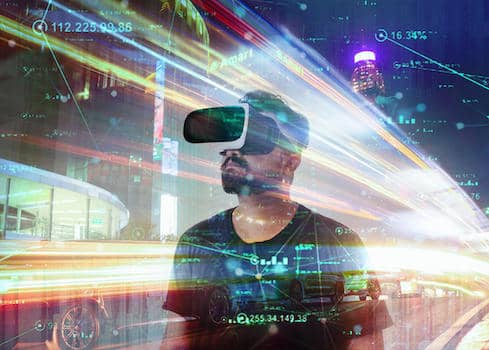Organizations will soon have three locations -- physical, online, and metaverse. Gartner says that now is the time to start learning and planning for offering products and services in this emerging realm.

Just four years from now 25% of people will spend at least one hour a day in the “metaverse” whether it’s for shopping, education, work, entertainment, or socializing, according to a new prediction from Gartner.
Just what the metaverse will look like in 2026 remains uncertain, but companies including Meta (Facebook), Microsoft, Nvidia, and Decentraland are laying the groundwork to create their own metaverse platforms and build their own virtual empires.
Gartner Research VP Marty Resnick says that vendors are already creating ways for users to replicate their lives in the digital realm from going to virtual classrooms to buying digital land and building virtual homes.
What? Does that mean you will need to buy the virtual version of your existing home so you own it in the metaverse before someone else can buy it? (Like how you had to buy your own domain name back in the 1990s, or how you had to rebuy all your vinyl albums on CD and then again on MP3?). Perhaps I could interest you in a killer price on this virtual Brooklyn Bridge.
Resnick says there are two schools of thought about the metaverse.
“One is that it is going to be this imaginary world, kind of like Ready Player One, with all these cool little places you can go, and you can even take a trip to Jupiter. It’s very much a fictional place,” he says. “Some other people are pushing the idea that the metaverse is going to be a digital twin of the physical world, so if I want to have a virtual event at The Plaza in New York then somebody is going to own the Plaza and there’s going to be a digital twin representation of The Plaza in the metaverse.”
If we end up with a digital twin version of the metaverse the question of who owns what looms large. Can anyone build their own version of The Plaza in New York or will the existing owners in the physical world have exclusive rights to that. That’s one of the many issues that remains to be resolved, according to Resnick. For digital real estate to hold any value, it needs to be finite. For CIOs who have asked him if they need to buy digital real estate, Resnick has recommended proceeding with caution. Dip your toe in. Buy small, just to experiment. But don’t place a big bet yet.
However, as we move closer to the metaverse future, organizations should know that they will need to have three locations -- their physical presence or brick and mortar location, their online location, and their metaverse location.
Attention, Please
The metaverse fixes an issue that was created by the pandemic shift to online. When that shift happened, everyone could attend their classes or their work meetings via a window on their desktop computer. The problem, says Resnick, is that the users would then also have one or two or three or other windows open on that same computer, as well. They may be in the virtual meeting, but they are also watching the baseball game in another window and playing a game of chess with a friend in a third window. Once the physical presence was gone, it also became difficult to grab someone’s undivided attention.
Regaining that undivided attention through an immersive experience is among the promises of the metaverse, Resnick says. If you watch someone playing a video game, they are in that kind of immersive experience zone.
Getting that undivided attention back again would be a huge benefit to vendors and marketers, college professors, and employers.
For a retailer, the online shopping experience gives customers the opportunity to compare prices and terms of multiple retailers in different windows. It’s not like having a shopper in your store to look at just the products on your shelves at your prices. A metaverse location could allow retailers to capture customer attention in that way again by bringing them into a virtual store and shutting out other windows. On the other hand, VR headsets could provide the user with additional information instantly, too.
“If I’m walking into a store, I’m doing an immediate search with my glasses on the reviews of a particular item,” says Resnick. “Or I’m looking for the nutritional information.”
Gartner defines a metaverse as “a collective virtual shared space, created by the convergence of virtually enhanced physical and digital reality. It is persistent, providing enhanced immersive experiences as well as device independent and accessible through any type of devices, from tablets to head-mounted displays.”
What About Digital Currencies and NFTs?
Because the metaverse won’t be owned by a single vendor, digital currencies and nonfungible tokens (NFTs) will enable the virtual economy.
Although there’s nothing that completely matches this definition today, since none of the metaverses connect to each other yet, companies like Microsoft are working on their metaverse-like experiences.
Resnick says there are three parts that go into creating metaverse. First is the transport into that virtual world, which is most effective if you have VR glasses or a headset on. He notes that in 2024 or 2025 manufacturers are likely to offer “smart” eye glasses -- the next version of Ray-Ban Stories or Snap’s version 4 Spectacles -- making VR technology more commonplace. The second part is transforming the physical world or creating virtual places where people can go. The third part is transacting -- the ability to use digital currency and buy and trade NFTs. Much of this kind of functionality is already available in video game platforms such as Roblox and individual Minecraft servers.
“Gaming drives a lot of our emerging technologies,” Resnick says. “The technology advances a lot faster in gaming.”
What CIOs Need to Do Now
Gartner says that businesses won’t need to create their own infrastructure because the metaverse will provide the framework, but the firm is forecasting that by 2026, 30% of organizations will have products and services ready for the metaverse. Because of that, it makes sense to start learning and planning.
What to Read Next:
Digital Twin Smart Mapping Hits the Slopes
Steal These Use Cases: 2021's Technology Wins in the Enterprise
About the Author(s)
You May Also Like







